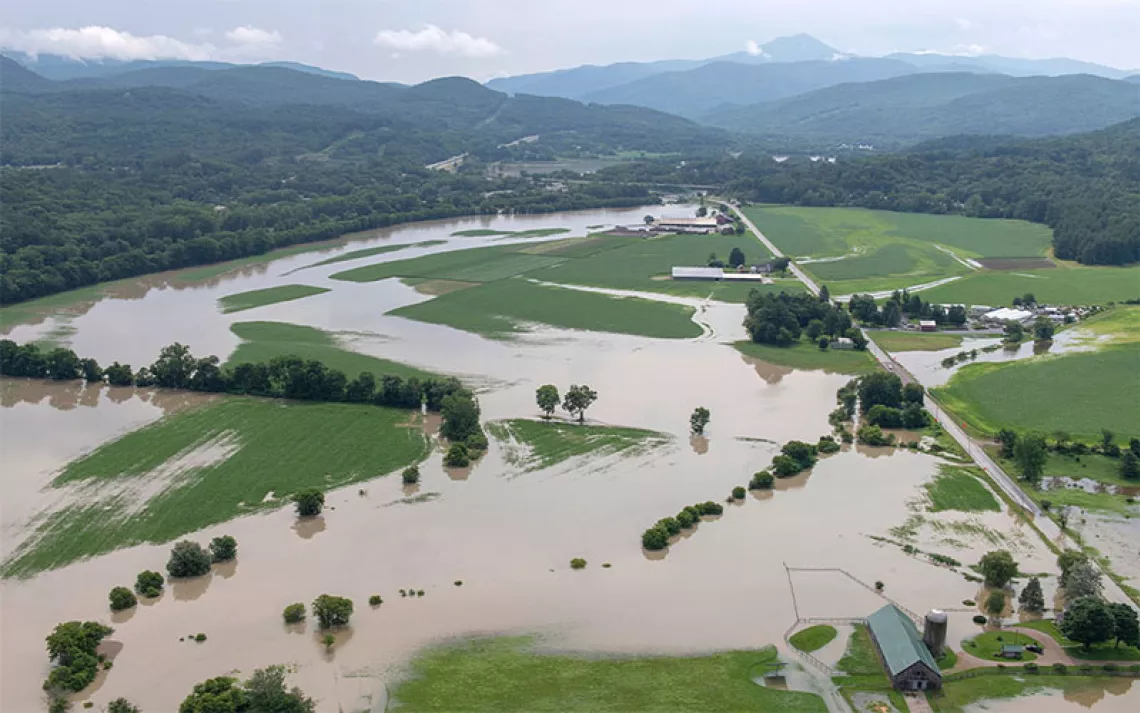North Carolina Hits the Brakes on the Atlantic Coast Pipeline
Department of Environmental Quality requests more information on water impacts

Lumbee River | Photo courtesy of Donna Chavis
The proposed 600-mile Atlantic Coast Pipeline, if it’s built, would carry fracked natural gas from West Virginia into Virginia and North Carolina, barreling through lush and pristine landscapes—the George Washington and Jefferson National Forests and the Cheat and Shenandoah Mountains, among others—and transecting territories of several Native American tribes. Since the project was first proposed in 2014, community activists, indigenous leaders, and environmentalists have called it a boondoggle that would threaten the fragile ecosystems, endangered species, and tribal lands in its path.
Today, they are celebrating after North Carolina announced it was requesting more information about the water impacts of the project. In a letter to the joint pipeline stakeholders, which include Duke Energy and Dominion, the state’s Department of Environmental Quality (DEQ) delayed a decision about whether to permit or deny a key water quality certification the project needs to get under way, putting it on hold.
“If Duke Energy had done its homework, they never would’ve chosen this route, because it passes through some of the most vulnerable environments in the nation and would impact some of the most vulnerable communities in the nation,” the Rev. Mac Legerton of Robeson County, a community organizer, said in an interview. “For those two reasons, I am fully confident this pipeline will never see the dark soil and the dark waters of our rivers and swamps.”
The Federal Energy Regulatory Commissions (FERC) is responsible for making sure there is an environmental impact statement (EIS) for projects like the Atlantic Coast Pipeline. Under Section 401 of the Clean Water Act, a state can review the water quality impact of a project to determine whether it will violate the state’s water quality standards, and either deny or permit the necessary certification for the project to move forward.
According to Kelly Martin, the associate director of the Sierra Club’s Beyond Dirty Fuels campaign, the pipeline company’s EIS filing was woefully inadequate. “It didn’t look at impacts to wildlife, streams, or water quality appropriately,” she says. “Duke and Dominion are looking for other ways to increase their profits at a time when there is flat electricity demand, and pipelines give them a way to do so, even if we don’t need the projects. They want to build this fracked gas pipeline and others at the expense of our climate, our water quality, and our wallets.”
North Carolina’s request for more information requires the pipeline LLC to provide more detailed information about the impacts to streams, waterways, and drinking water before it can evaluate the project.
Leaked audio reveals Dominion is planning to bring the dirty, dangerous, and unnecessary proposed fracked gas Atlantic Coast Pipeline into South Carolina. Demand the company complete a new environmental review of the proposed pipeline so that communities know what’s really at risk for their health, safety, and environment. (This action is for residents of NC, SC, VA, WV only.)
DEQ held a public comment period on whether to permit the 401 certification. Ryan Emanuel, an associate professor in the Department of Forestry and Environmental Resources at North Carolina State University and a member of the Lumbee Tribe, was among the thousands of people who responded. “DEQ made a really smart decision because of the size of this project,” Emanuel said in an interview. “In particular, the state is doing the right thing by asking for more information on cumulative impacts. These tend to be glossed over in federal environmental reviews and water quality permit applications, if they are treated at all.”
The federal EIS concluded that there would be no disproportionate impacts on poor and minority communities along the pipeline route. However, in a letter published in Science, Emanuel identified flaws in the method used to arrive at that conclusion. “They designed an analysis that wasn’t capable of answering the question that they needed to answer,” he says. “When I used the same data and analyzed it in an appropriate way, I found that there were highly disproportionate impacts on Native Americans in North Carolina.”
According to Emanuel’s analysis, 13 percent of the people living along the proposed pipeline route in North Carolina are Native American, in a state that has only 1 percent Native Americans overall. Over 30,000 tribal members would be affected. “That’s a textbook definition of disproportionate impact,” he says.
Donna Chavis, a member of the Lumbee Tribe who works with her husband, Rev. Legerton, to oppose the pipeline, says that many native peoples in the area still live on a subsistence level, and their lives depend on clean water. “Water has been integral to the life of native peoples here in Robeson County for generations,” she says. “It would be a direct impact if there was any pollution or disturbance.”
While Chavis would have preferred that the DEQ deny the 401 certification outright, she was relieved that it was requiring more answers from pipeline stakeholders. “I feel like our regulators have paid attention to the voices from the communities,” she says. “They are paying attention to the need, specifically, to consult with tribal communities and tribal leaders. It’s encouraging to feel like an administration has heard you. I believe that this decision is an outcome of having been heard.”
 The Magazine of The Sierra Club
The Magazine of The Sierra Club



